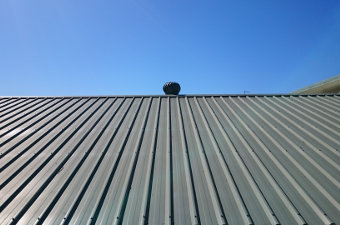Roofing Materials
Last Updated: 02/07/25
A building's roof system and its finished roofing materials shield a structure's interior from natural elements. Roofing systems generally fall into two general categories: 1) high-sloped or "pitched" roofs (residential) and 2) low-sloped or flat roofs (commercial). These two types of systems generally are constructed differently and use different materials, although some materials are used for both residential and commercial systems. EPA's designation specifically covers roofing materials containing steel, aluminum, fiber, rubber, plastic or plastic composites, and cement.
 Product Details
Product Details
To the maximum extent practicable, federal agencies are required to buy sustainable products, which are products that meet the purchasing program(s) listed below.
If there is more than one program listed below, agencies are directed to prioritize multi-attribute products, which meet statutory purchasing program requirements (![]() ) and one or more required Environmental Protection Agency purchasing programs.
) and one or more required Environmental Protection Agency purchasing programs.
Review our frequently asked questions for more information.
|
Product Type
|
Procurement Info
|
Where to Buy
|
|---|---|---|
| Aluminum |
|
|
| Concrete |
|
|
| Fiber |
|
|
| Plastic/Composites |
|
|
| Rubber |
|
|
| Steel |
|
|
| Wood/Composites |
|
 Legal Requirements
Lists federal requirements related to the purchase of this item, including applicable Federal Acquisition Regulation (FAR) requirements
Legal Requirements
Lists federal requirements related to the purchase of this item, including applicable Federal Acquisition Regulation (FAR) requirements
 Life Cycle Cost Savings
Life Cycle Cost Savings
Life Cycle Costing (LCC) aims to quantify the financial impact of a product over its entire life cycle to assist consumers in making decisions that will save them money over the long term.


 CPG
CPG